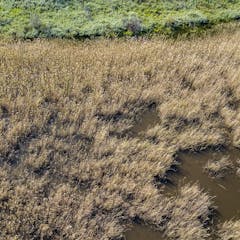
Articles on Green infrastructure
Displaying 1 - 20 of 44 articles

Mapping where water once flowed is important for managing flood risk today in Detroit and elsewhere.

Wetlands can prevent flooding, trap carbon and support livelihoods, as long as they are protected and managed.

Canada should invest in sustainable transportation infrastructure to accelerate the green transition.

South Africa needs to integrate urban green spaces as part of valuable infrastructure and provide framework for their sustainability.

What steps is the state government taking to bring Brisbane closer to being a smart city while managing rapid growth? And what differences can city residents expect to see for themselves?

The scenarios provide plausible and possible alternatives for futures of industrialisation. They also alert decision makers to desired and undesired development pathways.

Experts in city government are missing the perspective of residents.

Cities are among the harshest habitats on Earth. But when planned properly, private gardens can help improve their liveability.

Cities occupy just 3% of the Earth’s surface, yet more than half the world’s population live in urban environments. We need nation-wide plans to keep our cities cool so no one gets left behind.

Slashing carbon emissions by 68% by 2030 will depend on using the UK’s infrastructure strategy effectively.

The states are primarily responsible for providing infrastructure, but lack the budgets, especially since the pandemic hit revenues. Making up the shortfall depends very much on the Commonwealth.

In an era of climate change and extreme weather, a microgrid — a self-sufficient, energy-generating distribution and control system — puts communities on the path to self-reliance.

Municipalities are now forced to identify new cemetery planning methods and models that are environmentally sensitive and consistent with diverse cultural practices, and facilitate social cohesion.

In South African cities there’s an uneven distribution of trees, greenery and parks across racial and income geographies.

Natural assets produce important city services and complement engineered infrastructure. Investing in natural assets can help protect our environment, reduce municipal service costs and create jobs.

The coronavirus pandemic has highlighted the lack of green space available to those living in urban areas. Cities must be managed as ecosystems to make them more liveable and resilient.

The release of a roadmap for green roofs, walls and facades in Australia can help our cities catch up with the world leaders in urban greening.

Half-a-dozen strategies are effective for cooling urban areas. Used in combination, these strategies can drop the temperature even more.

When so much of the green space in our cities is in the form of nature strips, current restrictions on plantings are denying us the many social and environmental benefits of more diverse greenery.

From happier and healthier residents to more resilient buildings – green roofs offer significant benefits to cities.
